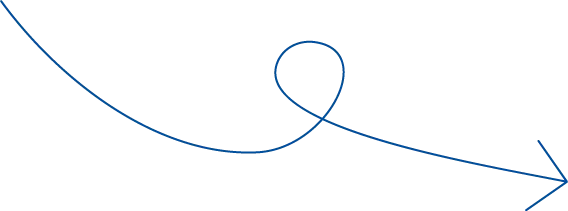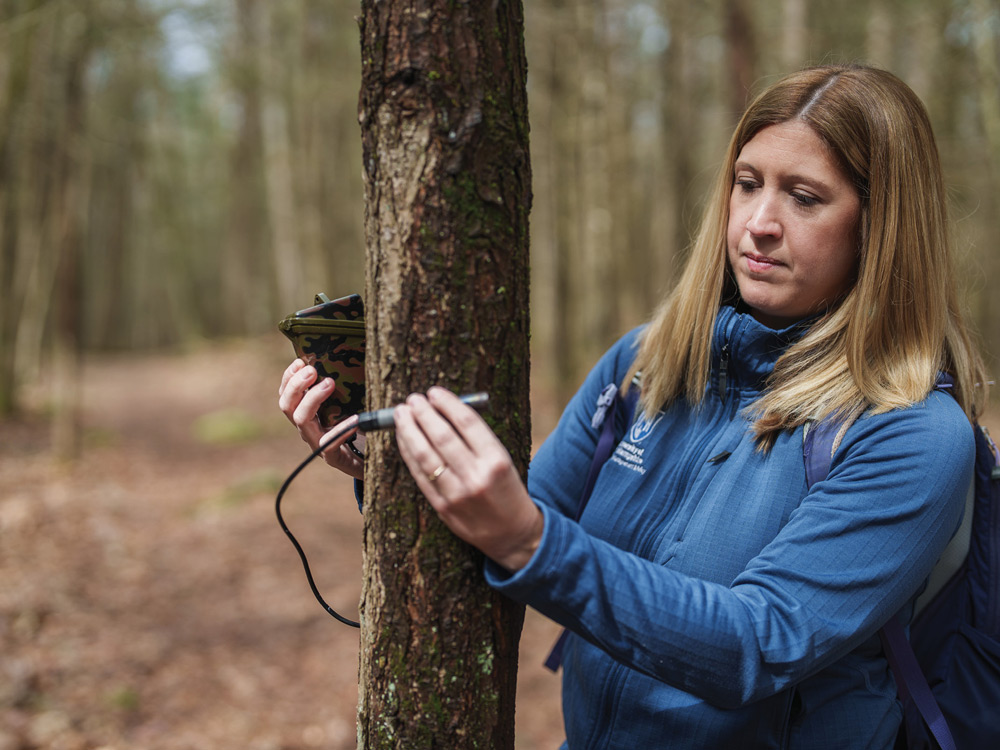Ecological Eavesdropping

he watershed moment of Laura Kloepper’s scientific career arrived while she was standing near a massive cave in the desert Southwest. Kloepper had spent years studying the acoustics — the science of sound — of both dolphins and bats, two species that use echolocation in similar ways. But as she watched the entire bat colony burst forth into the evening sky, she was dumbfounded.
“Seeing millions of bats fly out of the cave using echolocation and yet being so close to one another – that changed everything for me,” says Kloepper, a UNH assistant professor of biological sciences. “I realized that all the traditional acoustic strategies I had previously learned to count animals and understand their behaviors really break down when there are dense aggregations of them.”
Fascinated by this new direction in her research, she went on to apply the concept of an acoustic energy index, which focuses on the overall vocal energy (think: audio volume) of large animal groups to estimate their populations more accurately. This tool has also been proven to be immensely useful for the wide-ranging research that her graduate students conduct: examining the soundscapes of tern colonies, penguins in Antarctica, seals hauling out on Cape Cod, and frogs in ponds surrounding UNH’s Durham campus.







Jennifer Miksis-Olds, UNH research professor and director of CARE, is an expert on ocean soundscapes. She grew up near the sea and has dedicated her career to examining how the oceans are changing for various reasons, and how entire marine systems are impacted by those changes. Sound is a big part of that.
“Ocean sound is often portrayed as being negative, but it helps us understand the seafloor, study the creatures we hope to protect, and locate appropriate areas for safe and environmentally sustainable energy development,” she explains.
Miksis-Olds and other UNH faculty members laid the groundwork and engaged with all sectors to provide the first regional large-scale effort to look at the soundscape of the waters in New Hampshire’s backyard. CARE and its partners — including corporations like New Hampshire-based SubCom and JASCO Applied Sciences, along with the non-profit Northeast Regional Association of Coastal Ocean Observing Systems — are developing a regional underwater acoustic network to monitor environmental change in the Gulf of Maine.
The human element of acoustics is not lost on Lauren Ferguson, UNH assistant professor of recreation management and policy. Ferguson partners with the National Park Service to assess the impacts of sounds — natural and anthropogenic — on peoples’ health and well-being while they’re immersed in the outdoor space. This is particularly crucial for the most popular parks that are experiencing an overflow of visitors, which leads to more human-derived noise.
Over and over again, her research reveals the benefits of natural sounds: When we are outdoors, surrounded by natural sounds like bird songs, we tend to have more positive experiences. “Natural sounds and access to places that are quiet are mutually beneficial to both wildlife and humans,” she explains. “If we can quiet ourselves, we’ll have a better opportunity to see and hear the things we are seeking.”
This summer, she’s conducting research on sound as a component of the wilderness character of New Hampshire’s White Mountain National Forest. Even closer to home, Ferguson is currently collaborating with a handful of other UNH researchers to determine the biodiversity within Durham’s College Woods and how that impacts the human experience.

UNH Center for Acoustics Research and Education
Kirsch has also dipped his toes into ocean-based acoustics; he’s working with CARE faculty who study whale vocalizations to overcome the hurdles of recording underwater data, as sound propagates differently depending on salinity and temperature. He explains that the technology relies on the same fundamental tools as, say, vehicular mobile communications, but it’s distinct enough to broaden his research horizons.
“I think when you are open to working with people who have diverse fields of study, it gives you the opportunity to grow and find new solutions, which I really like,” he notes.
Looking toward the future of CARE, Miksis-Olds wants to build out expertise related to food security and agricultural acoustics to meet societal needs. This emerging field of study can help farmers with early pest detection — in grain silos, in the roots of plants — to address problems early and head off potentially disastrous crop losses.
“What I’ve learned through my research is that acoustics can be used in so many diverse applications, for things I didn’t even imagine at the beginning of my career,” she notes. “It’s exciting to see in one lifetime how acoustics technology is evolving in really innovative ways.”